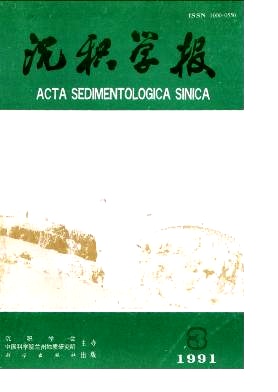The Sedimentary Diagenesis of Carbonatite of Early Triassic, Southern Sichuan
- Received Date: 1989-05-03
- Publish Date: 1991-09-10
Abstract: Southern Sichuan in this paper refers an area south of Yongchuan City, or is limited in the south of Sichuan Basin, there are a series of gentle foldings, the major structure is named as Luzhou Palaeoupwarping which develeped since Early Permian and reached its peak stage in Early Triassic. As a result of subqeous rising of eastern Sichuan and northen Guizhou, the water flow was restricted and a set of shallow sea and lagoon carbonate-gypsum interdeposits were formed during Jialingjiang Period. By the end of Jialingjiang Period, erogenic activity (corressponding to the initial episodo of Indo-China movement) led to the rising and upwraping of the study area and accompany with volcanic eruptions. The member 4 and 5 of Jialingjiang Formation on the top of Luzhou paleaoupwarping eroded entirely and the member 3 eroded in different scale. Then the Jurassic and Cretaceous sedimented continuously. The first and the second member of Jialingjiang Formation are a set of shallow sea carbonate mudstone, the lower part of which contain much of marine fossils but there are no longer in the upper part, it indicates that by the end of Jialingjiang Age, the study area was a near shore tidal to above tidal environment. Fossils and geochemical parameters change abruptly at the stratigraphic boundary. According to the δC13 value and other parameters, the T1 J12 should be re-calasified to T1 J51. The metacontemporaneous dolomite maintain the initial istopic composition more persistently than its calcite precursor, the calculated sedimentary temperature based on δ18O of metacomporaneous dolomite is 28.5-37.5℃ and it shows clearly that the difference of δ18O between paragenetic dolomite and calcite is less than 2% , which suggests that most dolomite is not formed by dolomization. In the case of constant CO3= and solid state, Mg++ replaced Ca++ and the increase of porosity because of the diffrence between the radius of Mg++ and Ca++. The preservence of porosity depends mainly on the process of dolomization and the genetic type of dolomite. There are some dolomitic cements formed in later diagenesis and the δ13C and δ18O values are slightly lighter than that of calcite. The equilibrium temperature of dolomite-calcite is 150-260℃ with the average of 210℃ , associated with palaeogeothermal gradient, it can be predicted that the burial depth of the first and second memeber of Jialingjiang Formation is 3700-4000m. compare with 1600-1700m of the present, it indicates that the strata may have been upwarped and eroded about 2000m. A sedimentary diagenesis model of lower Triassic in southern Sichuan is set up based on the isotopic, petrologic and palaeontologic data.
| Citation: | Gao Renxiang. The Sedimentary Diagenesis of Carbonatite of Early Triassic, Southern Sichuan[J]. Acta Sedimentologica Sinica, 1991, 9(3): 50-58. |






 DownLoad:
DownLoad: